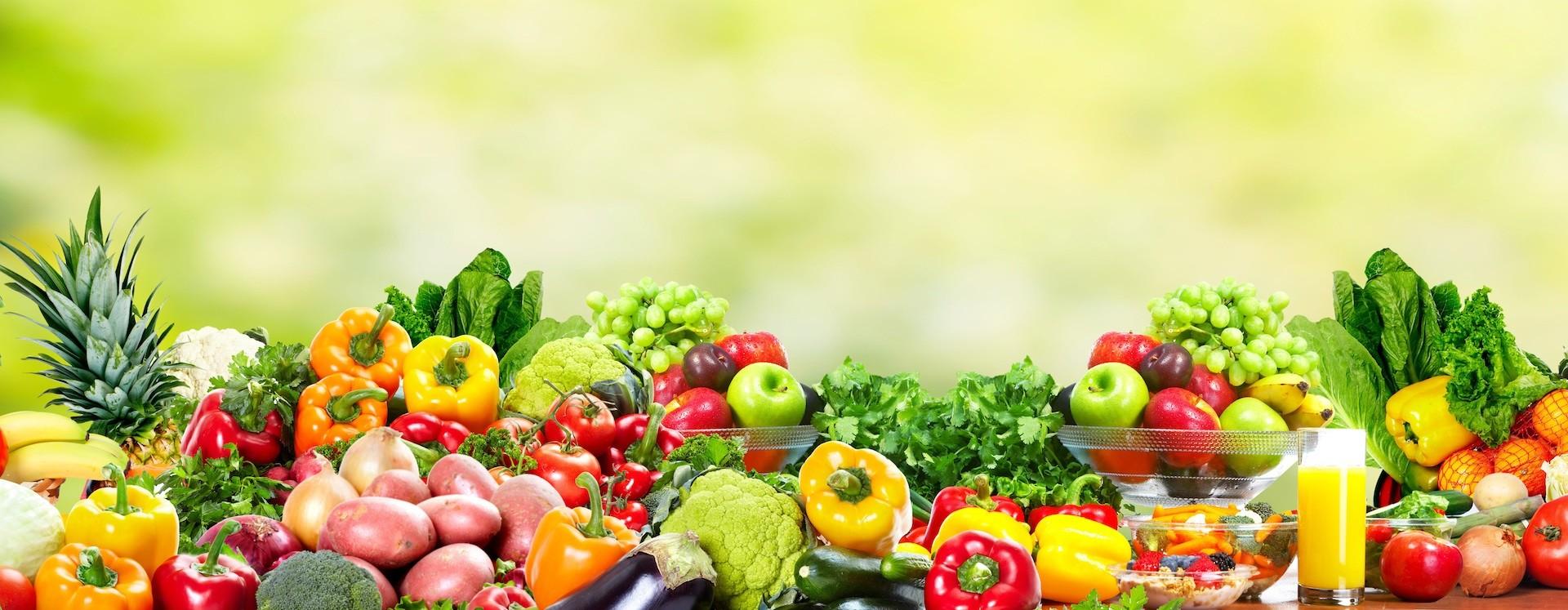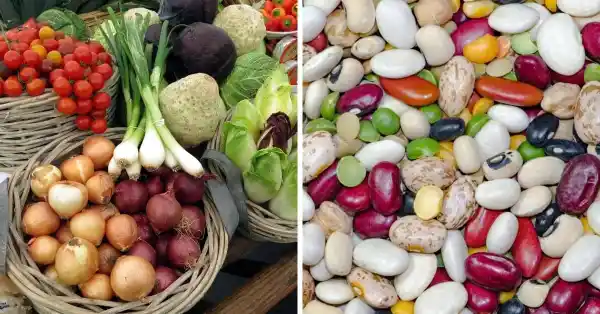Introduction
In the realm of nutrition, vegetables and legumes are often hailed as essential components of a healthy diet. While both offer a plethora of nutrients, they differ in their botanical classification, nutritional profiles, and culinary uses. In this expert guide, we’ll delve into the distinctions between vegetables and legumes, exploring their characteristics, health benefits, and culinary versatility.
Botanical Classification
Vegetables
Vegetables belong to various plant families and encompass a wide range of edible plant parts, including roots (carrots, potatoes), stems (asparagus, celery), leaves (spinach, lettuce), flowers (broccoli, cauliflower), and fruits (tomatoes, cucumbers). From leafy greens to starchy tubers, vegetables offer diverse flavors, textures, and nutritional profiles.
Legumes
Legumes, on the other hand, belong to the Fabaceae family and are characterized by their edible seeds enclosed in pods. Common examples of legumes include beans (kidney beans, black beans), lentils (green lentils, red lentils), peas (green peas, split peas), and chickpeas. Legumes are renowned for their high protein and fiber content, making them a staple in vegetarian and vegan diets.

Nutritional Profiles
Vegetables
Vegetables are rich in essential vitamins, minerals, antioxidants, and dietary fiber, making them valuable contributors to overall health and well-being. Leafy greens like spinach and kale are packed with vitamin K, folate, and antioxidants, while colorful vegetables such as bell peppers and carrots provide an array of vitamins A and C. Additionally, root vegetables like sweet potatoes and beets offer complex carbohydrates and beneficial phytochemicals.
Legumes
Legumes are prized for their high protein content, making them a valuable source of plant-based protein for vegetarians and vegans. They are also rich in complex carbohydrates, fiber, vitamins (especially B vitamins), and minerals such as iron, potassium, and magnesium. Incorporating legumes into the diet can help promote satiety, regulate blood sugar levels, and support digestive health.
Culinary Uses
Vegetables
Vegetables lend themselves to a myriad of culinary applications, from raw salads and stir-fries to soups, stews, and roasted dishes. They can be enjoyed fresh, cooked, steamed, grilled, or baked, allowing for endless culinary creativity. Whether served as a side dish, incorporated into main courses, or enjoyed as snacks, vegetables add flavor, color, and nutritional value to meals.
Legumes
Legumes are equally versatile in the kitchen and can be used in a variety of dishes, including soups, stews, curries, salads, and dips. They can be cooked from dried or canned, mashed into spreads like hummus, or ground into flour for baking. Legumes also serve as a nutritious meat substitute in vegetarian dishes, providing texture, protein, and substance to meals.
Health Benefits
Vegetables
Consuming a diet rich in vegetables has been linked to numerous health benefits, including reduced risk of chronic diseases such as heart disease, diabetes, and certain types of cancer. The vitamins, minerals, antioxidants, and fiber found in vegetables support immune function, promote healthy digestion, and contribute to overall vitality and longevity.
Legumes
Likewise, incorporating legumes into the diet offers a multitude of health benefits. The high fiber content of legumes promotes satiety, aids in weight management, and supports digestive health by preventing constipation and promoting regularity. Additionally, the protein, vitamins, and minerals in legumes contribute to muscle growth and repair, bone health, and energy production.
Conclusion
In summary, while vegetables and legumes share similarities as nutritious plant-based foods, they each offer unique characteristics and health benefits. Vegetables provide a diverse array of vitamins, minerals, and antioxidants, while legumes boast high protein and fiber content. By incorporating both vegetables and legumes into your diet, you can enjoy a well-rounded and nutritious eating pattern that supports optimal health and well-being.
What are vegetables and legumes?
Vegetables are edible plant parts such as roots, stems, leaves, flowers, and fruits, belonging to various plant families.
Legumes are members of the Fabaceae family and are characterized by their edible seeds enclosed in pods, including beans, lentils, peas, and chickpeas.
How do vegetables and legumes differ botanically?
Vegetables encompass a wide range of plant parts from various plant families, while legumes belong to the Fabaceae family and are characterized by their edible seeds enclosed in pods.
What are the nutritional differences between vegetables and legumes?
Vegetables are rich in vitamins, minerals, antioxidants, and dietary fiber, while legumes are prized for their high protein and fiber content, along with vitamins and minerals such as iron, potassium, and magnesium.
How can vegetables and legumes be incorporated into the diet?
Vegetables can be enjoyed fresh, cooked, steamed, grilled, or baked and incorporated into salads, stir-fries, soups, stews, and side dishes.
Legumes can be cooked from dried or canned and used in soups, stews, curries, salads, dips, spreads, and vegetarian dishes.
What health benefits do vegetables and legumes offer?
Consuming a diet rich in vegetables is linked to reduced risk of chronic diseases such as heart disease, diabetes, and certain types of cancer, while the fiber, protein, and nutrients in legumes support digestive health, weight management, and muscle growth.
Are there any differences in cooking methods for vegetables and legumes?
Vegetables can be prepared in various ways including raw, cooked, steamed, grilled, or baked, while legumes are typically soaked and cooked before consumption, and can be mashed, pureed, or ground into flour.
Can legumes be considered a protein source for vegetarians and vegans?
Yes, legumes are an excellent source of plant-based protein and are often used as a protein substitute in vegetarian and vegan diets, providing essential amino acids necessary for muscle growth and repair.
What are some examples of common vegetables and legumes?
Common vegetables include carrots, broccoli, spinach, tomatoes, cucumbers, potatoes, and bell peppers.
Common legumes include beans (kidney beans, black beans), lentils (green lentils, red lentils), peas (green peas, split peas), and chickpeas.
Are there any potential allergens associated with vegetables and legumes?
While rare, some individuals may have allergies to specific vegetables such as tomatoes or bell peppers, and legumes such as peanuts or soybeans. It’s essential to be aware of potential allergens and consult a healthcare professional if allergic reactions occur.
How can I incorporate a variety of vegetables and legumes into my diet for optimal health?
To maximize health benefits, aim to consume a diverse array of vegetables and legumes regularly, incorporating different colors, textures, and cooking methods into your meals and snacks. Experiment with new recipes and ingredients to keep meals exciting and nutritious.
- Lip Filler London – Lip Augmentation & Natural Lip Enhancement - December 16, 2025
- Tennessee’s THC Beverage Market - June 5, 2025
- Top THC Infused Seltzers in Delaware - June 5, 2025
Tagged in:
Vegetables vs. LegumesAbout the Author
Charles Wilson
Charles Wilson, the Garden Harmony Maven behind this site, is a maestro in creating synchronized symphonies of flora. With a keen eye for balance and beauty, Charles shares his expertise on designing gardens that harmonize with nature and bring tranquility to outdoor spaces. His site is a source of inspiration for those looking to create lush and balanced landscapes that evoke a sense of peace and serenity.
View All Articles



